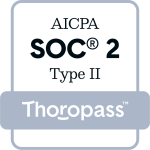Today’s healthcare landscape has been completely reshaped by pandemic experiences. Modern shifts in patient interactions and patient experiences were dramatically accelerated by the past few years and some things will never go back to the way they were.
As evidenced by the rise of virtual care, healthcare providers are increasingly turning to new technology to connect them to their patients and the public is more and more willing to use modern technology in the healthcare process. As practitioners, providers, and health systems roll out their newest game plans for modern care, the best plans are focussing on four distinct traits of premiere patient experience — Proactive, Personalized, Predictive, and Precise experiences.
“The best PX professionals are focussing on four distinct traits of premiere patient experience — Proactive, Personalized, Predictive, and Precise experiences.”
1. Proactive Patient Experience
When we order any kind of delivery today — ecommerce, restaurant take out, etc. — modern customer experiences deliver proactive updates and premiere service. This kind of proactive service standard is working its way into patient expectations as well. Proactive patient touchpoints like messages helping patients to complete various appointment preparation procedures at the right time, outreach securely collecting important patient information to reduce waiting room time, appointment reminders letting patients confirm, cancel, or reschedule as needed help patients achieve the best outcomes possible and improve patient satisfaction, reducing patient churn and patient leakage.
Proactive experiences benefit providers and health systems as well. Modern appointment confirmation, cancelation, and rescheduling tools connected directly to scheduling systems greatly reduce patient no-shows and missed appointments, improving staff efficiency. Proactive preparation reminders greatly increase the likelihood of patients arriving fully prepared for procedures, almost eliminating wasted appointments for procedures with complicated lead up like colonoscopy and other gastrointestinal procedures. Overall, proactive patient experience benefits everyone involved.
2. Personalized Patient Experience
Patient-centered care has only continued to grow in significance and importance since the philosophy first began growing momentum. According toone studyfrom the American College of Clinical Pharmacy, promoting patient-centered experiences in communications with patients can often lead to “increased patient satisfaction, improved patient-provider communication, and enhanced patient well-being.” Personalization throughout the patient journey helps patients feel truly valued, leading to patients feeling more empowered in their healthcare decisions.
Making sure patient names are included in any communication is a great first step, but deeper, more connected personalization is possible with modern technology. For example, delivering personalized directions not only getting patients to the general facility their appointment is located in, but step by step directions from where to park to where in a facility their specific treatment center is located can feel like white-glove, premiere service to patients without disrupting hospital operations thanks to modern automation.
3. Predictive Patient Experience
Predictive experiences may seem like future technology, but modern predictive patient experience is within reach for every healthcare provider and health system today. Complex AI algorithms and Machine Learning software can have positive effects and outcomes but often out strip their practicality because of cost and implementation timelines. Instead, patient experience professionals should look to the information they already have about patients to cultivate predictive experiences.
“Patients with very positive or negative survey responses will likely leave the same kind of reviews — key in today’s search engine driven society.”
For example, many digital patient survey solutions are available for deployment directly following patient interactions. These surveys can help guide patient journey development, but can also create a predictive opportunity. Thanks to digital surveys’ ability to be immediately processed by automation, providers can predict what kind of review or story patients will tell about their interactions. Patients with very positive or negative survey responses will likely leave the same kind of reviews — key in today’s search engine driven society.
Prompt patients likely to leave positive reviews to do so, linking to a hospital’s Google review page or other resource. Likewise, patients who will leave negative reviews should be taken care of as well. Ask these patients if they would like a call from a hospital representative or other staff member who can help with any issues they may have experienced. These predictive experiences gather important positive reviews, meet disappointed patients where they are, and reduce the chances of patients spreading negative reviews to friends and family.
4. Precise Patient Experience
The fast track to overwhelming patients and making them feel less empowered in their healthcare decisions is providing copious amounts of information they may struggle to wrap their minds around. Everyone knows the stories of patients spiraling while reading dozens of potential diagnoses online after googling their own symptoms. Prevent these negative experiences by promoting precise delivery of the right information at the right time.
Traditionally, material like appointment preparation procedures had to be given to patients all at once as they wouldn’t often interact with healthcare providers between initial appointment scheduling and the appointment date. Today’s digital systems can be much more precise. Instead of simply telling patients everything they must do at the same time, precise patient experiences deliver just the information patients need that day. By reducing the information delivered to precise installments, patients are more likely to complete preparation requirements and patient outcomes are likely to improve.
Delivering on modern patient experience expectations means deploying the right modern technologies and connecting to patients in new, digital ways. The best patient experience professionals are focusing on the Four Ps of Patient Experience to improve patient outcomes, boost satisfaction, and in turn increase patient retention rates and grow word-of-mouth recommendations.
“Together these four Ps are transforming today’s modern patient experiences.”
Proactive experiences connect with patients at exactly the right time and meet rising expectations from patients comparing their healthcare journeys to the way businesses cater to them in their lives as consumers. Personalized patient experiences help patients feel valued and empower them to take charge of their healthcare. Predictive patient experiences, once a thing of science fiction, are now accessible and deployable by healthcare providers from large health systems to small private practices. Precise patient experiences make sure patients get exactly the right information exactly when they need it, increasing the number of patients who fully understand the information being delivered. Together these four Ps are transforming today’s modern patient experiences.






